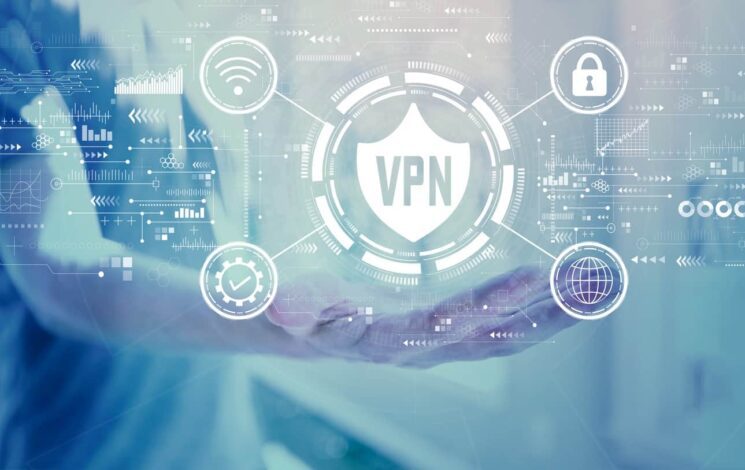The rise of digital nomads is associated with an increase in the number of technologies. Portable digital tools, especially computers, offer a myriad of opportunities for independent digital nomads. By operating online businesses and leveraging various technological platforms, they create new job prospects. A multitude of digital applications and programs cater to their needs.
It enables digital nomads to deliver their work to clients or employers through digital platforms. However, digital nomads face heightened cybersecurity risks compared to traditional workers. Here are cybersecurity tips for digital nomads.
In This Post
How to protect personal data while traveling?

1. Create strong, unique passwords
Ensure that your passwords are at least 12 characters long, employing a combination of uppercase and lowercase letters, numbers, and symbols. Avoid reusing passwords across multiple devices and accounts to prevent unauthorized access. Consider using a password manager to store your diverse passwords securely.
2.Implement two-factor authentication (2FA)
Add an extra layer of security to your devices by enabling 2FA or multifactor authentication (MFA). Instead of solely relying on passwords, 2FA/MFA requires you to provide additional verification codes, thwarting hackers even if they possess your password.
3. Use a VPN

You need a good VPN to ensure you don’t have access to your bank card or your streaming service while you travel. With a powerful member of this class like VeePN, you can pay securely and not worry about your payment details being intercepted. When connecting to VPN servers, all your data will be encrypted and the IP address will be spoofed. You can even delete Netflix history or switch to a different region. For the test, you can use the free trial VeePN, this will be enough.
4. Regularly update your devices
Software updates often contain crucial patches that address recently discovered vulnerabilities. To guarantee optimal protection against these weaknesses, diligently perform updates whenever possible. Alternatively, enable automatic updates to minimize the risk of forgetting.
Additionally, when it comes to digital security, it’s equally vital to keep your devices themselves up to date. Hardware manufacturers frequently release firmware updates that can enhance device security and performance. Neglecting these updates can leave your devices susceptible to exploits that attackers may leverage.
Moreover, consider using a reputable antivirus and anti-malware software suite. These tools can offer real-time protection against evolving threats, safeguarding your devices and data from various forms of cyberattacks.
By maintaining both software and hardware updates, alongside robust security software, you establish a strong defense against potential threats, ensuring the continued safety of your digital ecosystem.
5. Encrypt your emails

If you frequently send confidential emails, it is essential to encrypt them. Encrypting all your online and offline data will guarantee that your email content remains inaccessible, even if intercepted. This recommendation applies to any online document or file transmission as well.
This advice holds particularly true for employees working directly for an organization, as opposed to contractors. Fortunately, most email providers offer encryption services, both free and paid, for easy data protection. As an added security measure, you should use the best free VPN for Edge browser, which can encrypt all your emails. Even more than that, all your actions are in the browser.
6. Reduce file and data sharing
Digital nomads frequently exchange sensitive information and files, including presentation documents, account data, and product prototypes. However, sharing files can pose a significant security risk. Unencrypted cloud-based sharing services may exist, leading to potential data exposure. Employees must verify the source of sharing requests to prevent data breaches. To mitigate file-sharing risks, opt for third-party providers that prioritize security. Opting for secure cloud storage solutions can also minimize the risk of data theft.
Furthermore, it’s advisable to implement multi-factor authentication (MFA) for accessing sensitive files and data. MFA adds an additional layer of security by requiring users to provide multiple forms of identification before granting access. This extra step can deter unauthorized access even if login credentials are compromised. Regularly auditing and monitoring file sharing activities can also help detect and respond to suspicious behavior promptly. Finally, staying informed about emerging cybersecurity threats and trends is essential to adapt and strengthen your file sharing security strategies over time. In today’s digital landscape, proactive measures and vigilance are key to maintaining data integrity and confidentiality.
7. Backup data

Regular backups ensure the safety of all your data in case of any mishaps. You can perform backups locally on external hard drives and flash drives or utilize cloud-based backup solutions over the Internet.
For digital nomads, the ideal choice is to back up data to the cloud. This eliminates concerns about physical security while carrying extra storage devices and eliminates the risk of leaving or losing your hard drive.
You have various options to choose from when it comes to online backup solutions, with Google Drive being a popular choice that seamlessly integrates with many existing tools. These solutions often offer additional features like automatic backups, encryption, and malware scanning to enhance security.
8. Learn how to counter phishing attacks
Phishing scams occur when cybercriminals impersonate legitimate individuals or businesses and attempt to deceive you into revealing sensitive information such as bank account details and credit card information. Protecting yourself from phishing requires familiarizing yourself with its characteristics.
Here are several indicators of a suspicious email, text, or website that may be fraudulent:
- Multiple spelling errors: If an email contains numerous spelling or grammatical mistakes, it is likely from a scammer.
- Urgency: Scammers create a sense of urgency, pushing you to act swiftly and without consideration. Take your time to assess the authenticity of the message before taking any action.
- Illegitimate source: Verify that the message or email is from the expected sender. For websites, ensure that the URL is accurate.
- Prevention: To avoid falling victim to phishing attacks, always contact individuals or companies directly for verification. Never follow links in suspicious messages, as they may lead to malware installation or fake websites.
Conclusion
This modern concept transforms individuals from a survival-focused work mentality to one that prioritizes experiencing and savoring life. With advancing technology, the number of people who choose to combine their living, traveling, and working will continue to grow steadily. Achieving optimal productivity as a digital nomad requires a keen focus on safeguarding cybersecurity.
Overall, the surge of digital nomads embodies society’s inclination towards unique lifestyles. This alternative approach to work and life balance has become one of the main advantages of the last decade.